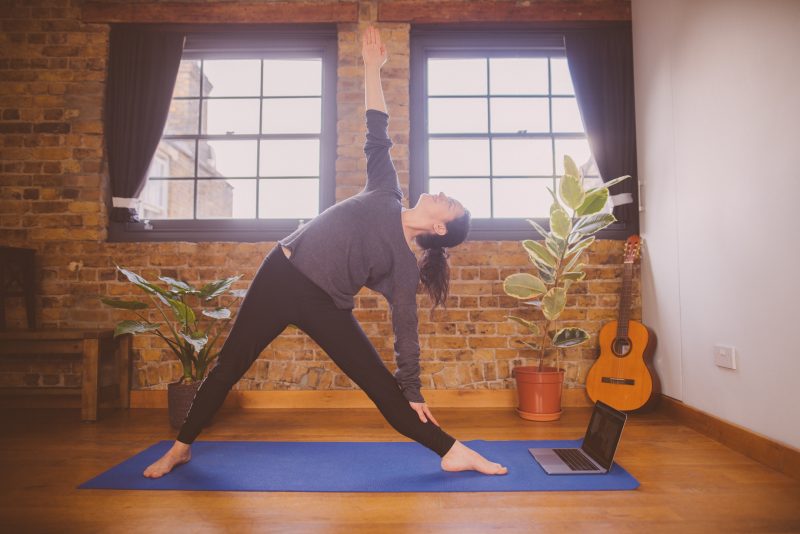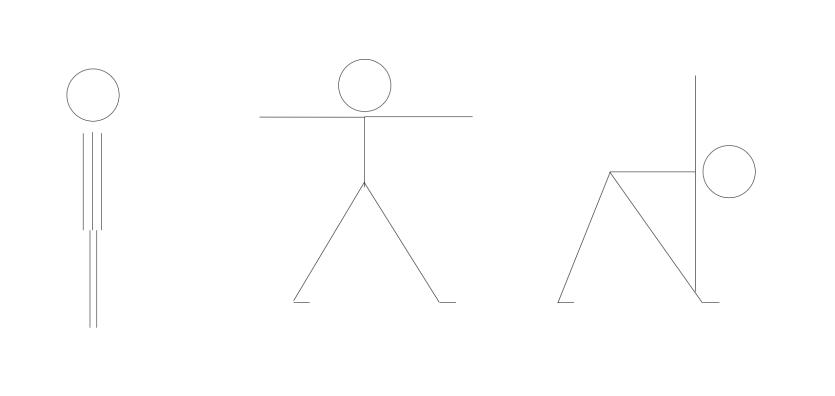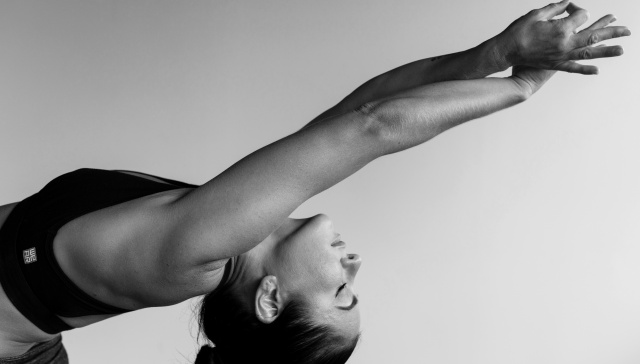Triangle Pose
Utthita Trikonasana

A beginners guide to Triangle Pose aka (Utthita) Trikonasana
A well known pose part of any beginner's yoga class, but so hard to get right!
What does Utthita Trikonasana mean?
The name "Utthita Trikonasana" comes from the Sanskrit word "Utthita",meaning "extended", “trikona” which translates to triangle, and “asana” meaning pose.
It is one of the most well known yoga pose, together with dog pose or warrior pose, part of most yoga beginner's classes.
How to enter in Trikonasana
You enter Trikonasa, from the Mountain pose Tadasana, with a little jump so you can spread your legs apart, or just step your feet apart if you have a sensitive lower back or a knee injury.
Your arms are spread out at shoulder height, strongly extending from the shoulder to the end of the fingers
You'll always start with the right side (something to do with the colon!). So first, you turn your left foot slightly in and turn your right leg to the right - the entire leg, from the root of the leg to the toes, so your entire leg is facing the short end of your mat.
Then you pull your ams apart again and extend your right side until your can grab your ankle.

How to be in Trikonasana
Now you’re lowered into a triangle shape you can look straight ahead, or look to your toes if you're having trouble keeping the balance.
If you are into a challenge, turn your head and look up at your left hand. The work is in the legs, keep pulling the knee cap up, and keep pulling the opposite hip back, stretching the arms apart.
You're looking at extending from the lower hip to the lower armpit. Stretch the upper arm firmly. Try and lower your upper rib cage. The objective is to have the torso parallel to the ground, with hips open facing forward, both arms straight, in a "triangle".
To transition to the other side, press your feet into the floor, raise your knee caps and lift to the center. Relax your arm at this stage if you're exhausted!
Then you can repeat on the other side, yay!
How to exit Trikonasana
To come out of the Trikonasana pose, push the soles of your feet strongly into the floor, inhale and bring your torso back up. Pivot your toes in and jump or step to go back to Tadasana.
Trikonasana benefits
Trikonasana stimulates your abdominal organs, strengthens your back and legs, stretches your inner thighs, hamstrings, calves, spine, shoulders, chest and opens hips and energises the body, improving your focus.
Adjustments for Trikonasana:
To get the most from the pose, keep a micro-bend in your knee that you are bending over so you don’t over-extend in your knee. It’s also recommended that you avoid resting your hand directly on the knee joint. If you have neck issues, we recommend you gaze down to the floor.
You can use props to make this pose more supported and place your hand on a block on the inside or outside of your foot depending on what feels right for you and your body, but make sure you still keep both sides of your body nice and long.
Poses to know:
It’s useful to master Upward Facing Dog, Forward Fold and Child’s Pose before Trikonasana pose, so you can transition through a flow with ease.
Variations of Trikonasana:
There are a number of variations of Trikonasana pose but the two main variations of Trikonasana pose are Baddha Trikonasana which is a bound version of triangle pose and Parivrtta Trikonasana, the revolved triangle pose.
Most popular yoga poses in the UK
Trikonasana is a popular pose in the UK with 590 searches per month on Google. But Downward Dog Is the top searched yoga pose with 8100 searches a month, followed by Handstand (3,600), headstand (1,600), Warrior pose (1000 searches a month). and Shoulder stand with 880 searches per month.
 Live Yoga Teachers
Live Yoga Teachers
